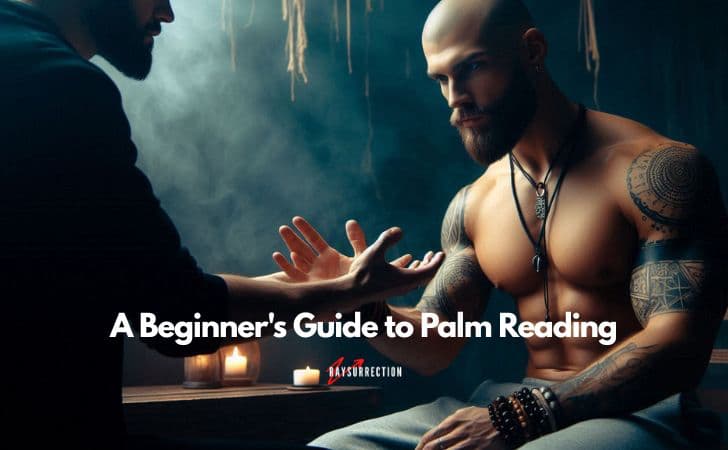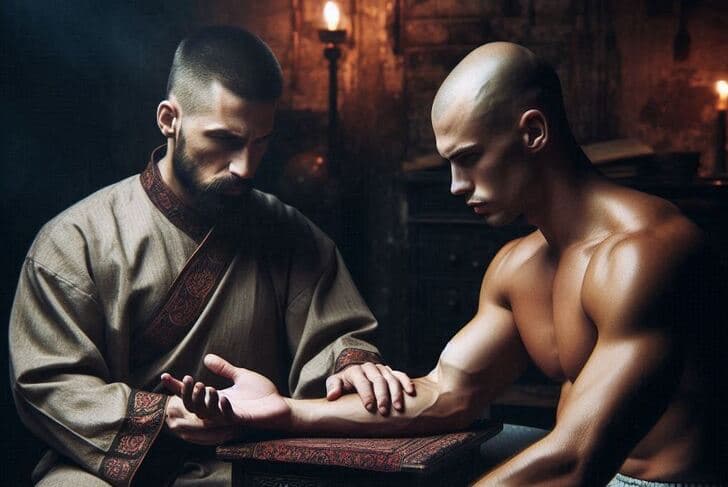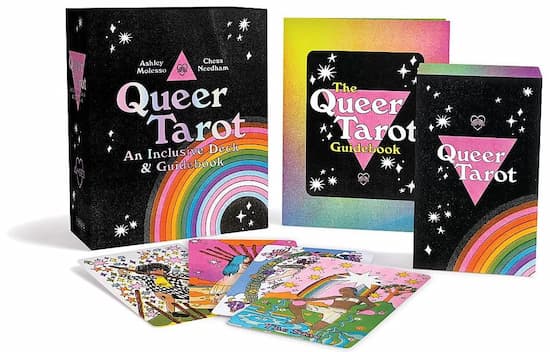Palm reading, or chiromancy, is a window into someone’s personality, experiences, and potential paths, all through the lines, shapes, and features of their hands. Every crease and curve tells a story, reflecting who you are and how you move through life.
Let's check out the meanings behind each part of the palm, from major lines to subtle symbols, so we can understand what they reveal. Think of it as decoding a personal map written in the skin.
Hand Shapes and Their Meanings
Hand shapes set the foundation for a palm reading, revealing broad personality traits before diving into details. They’re often tied to the four elements - earth, air, fire, water - each with distinct characteristics. The proportions of the palm and fingers give clues about how someone thinks. These shapes frame the rest of the reading, offering a starting point for interpretation.
- Earth hands, square with short fingers, suggest groundedness. People with earth hands often value stability and practical work, thriving in routines. They tend to be reliable, hands-on, and focused on tangible results. Think farmers, builders, or anyone who loves getting things done.
- Air hands, square with long fingers, point to intellect. These individuals lean toward ideas, communication, and quick thinking. They often excel in social settings or analytical roles, like writers or teachers. Their minds are always buzzing with concepts.
- Fire hands, rectangular with short fingers, indicate boldness. Fire-handed people are energetic, action-oriented, and often take risks. They lead with enthusiasm, like entrepreneurs or athletes, but may act impulsively. Their drive pushes them to stand out.
- Water hands, long and narrow, reflect sensitivity. Those with water hands feel deeply, often showing intuition and creativity. They’re drawn to artistic or emotional pursuits, like musicians or counselors. Their inner world is rich and complex.
Major Lines and Their Significance
The three major lines - heart, head, and life - form the core of a palm’s story, each revealing a key aspect of life. Their length, depth, and shape show how emotions, thoughts, and vitality shape someone’s experiences. No two hands have identical lines, making each reading unique. These lines are the backbone of understanding a person’s inner and outer world.
- A long, deep heart line signals strong emotional connections. It often belongs to someone who prioritizes relationships and loves deeply. A curved heart line might show warmth, while a straight one suggests emotional control. Faint or short lines hint at independence or emotional reserve.
- A straight head line reflects logical thinking. People with this line tend to approach life with clarity and focus, like scientists or engineers. A curved head line points to creativity or intuition, common in artists. Breaks in the line may indicate shifts in mental focus or perspective.
- A robust life line suggests vitality and resilience. It doesn’t predict lifespan but shows physical and emotional strength. A long, unbroken line often means consistent energy, while breaks might reflect life changes. A faint line could point to a more introspective nature.
- Forks or branches in lines add nuance. A heart line forking toward the fingers might show a balance of passion and practicality. A head line branching downward could indicate intuitive decision-making. These variations reveal how traits blend in complex ways.
Minor Lines and Their Interpretations
Minor lines, like the fate, sun, and Mercury lines, offer specific insights into life events or talents. Not everyone has these lines, and their presence or absence carries meaning. They act like supporting characters, adding depth to the main story. These lines often highlight unique strengths or moments in someone’s path.
- A clear fate line indicates a strong sense of purpose. It often appears in people with defined career paths or life missions, like doctors or activists. Breaks or a faint line suggest a more flexible, less linear life. Absence might mean freedom from rigid goals.
- A prominent sun line points to creativity or recognition. People with this line often shine in artistic or public roles, like performers or designers. A faint or missing sun line suggests a preference for a private life. It’s about how someone expresses their inner spark.
- A strong Mercury line highlights communication skills. This line is common in those who excel in business, writing, or public speaking. A weak or absent line might mean less focus on verbal expression. It reflects how someone connects through words or ideas.
- Short or broken minor lines suggest changeability. A fragmented fate line might show shifts in career or direction, like someone who switches jobs often. A partial sun line could indicate sporadic creative bursts. These lines reveal life’s ebbs and flows.
Mounts and Their Personality Clues
Mounts, the fleshy pads on the palm, are tied to planetary influences and reveal specific traits. Each mount, located under fingers or around the palm’s edges, reflects a different aspect of character. Their size and firmness show how strongly those traits manifest. Mounts add a layer of depth, like personality highlights in a reading.
- A plump Mount of Venus suggests warmth and sensuality. Found below the thumb, it indicates a love for pleasure, relationships, or beauty, like in chefs or romantics. A flat mount might mean emotional restraint or less focus on sensory experiences. It shows how someone connects to life’s joys.
- A raised Mount of Jupiter reflects ambition. Under the index finger, it points to leadership and confidence, common in CEOs or organizers. A less prominent mount suggests humility or less drive for control. It reveals how someone asserts their influence.
- A developed Mount of Saturn indicates seriousness. Below the middle finger, it suggests a responsible, disciplined nature, like in accountants or scholars. A flat mount might mean a lighter, less structured approach to life. It reflects how someone handles duty.
- A prominent Mount of Apollo shows creativity. Under the ring finger, it’s tied to art, beauty, or self-expression, seen in painters or musicians. A flatter mount suggests practicality over aesthetics. It highlights how someone channels their inner vision.
Symbols and Their Specific Meanings
Small symbols like stars, crosses, or squares on the palm act as markers of significant events or traits. They appear on lines or mounts, adding precise insights to a reading. Each symbol carries a unique meaning, often tied to moments of change or emphasis. Spotting them requires careful attention but enriches the interpretation.
- A star on a line or mount signals a notable event. On the sun line, it might mean a moment of fame or creative success, like winning an award. On the life line, it could indicate a transformative experience. Stars highlight pivotal moments in someone’s story.
- A cross suggests a challenge or turning point. On the heart line, it might point to a significant emotional event, like a breakup or deep bond. On the fate line, it could indicate a career obstacle. Crosses mark moments of struggle or growth.
- A square offers a sense of protection. Found near a line, it suggests recovery or stability, like overcoming a health issue on the life line. It’s a sign of resilience or support during difficulty. Squares act like shields in the palm’s narrative.
- Chains indicate periods of indecision or struggle. A chained heart line might reflect emotional ups and downs, like a turbulent relationship. On the head line, it could show mental scatteredness. Chains reveal phases of complexity or uncertainty.
Fingers and Their Characteristics
Fingers, with their length, shape, and features, reveal specific personality traits and tendencies. Each finger corresponds to a planet, like mounts, and its appearance adds detail to the reading. Knots, bends, or smoothness in fingers show how someone expresses their qualities. Fingers are like the fine print of a palm’s story.
- A long index finger suggests leadership. Tied to Jupiter, it indicates confidence and ambition, common in managers or public figures. A shorter index finger might mean modesty or less need for control. It shows how someone projects authority.
- A prominent middle finger reflects discipline. Linked to Saturn, a long, straight middle finger points to responsibility, like in planners or engineers. A shorter or bent finger might suggest a more relaxed nature. It reveals attitudes toward duty and structure.
- A well-formed ring finger indicates creativity. Associated with Apollo, it’s strong in those who love art or self-expression, like writers or designers. A less prominent ring finger might mean practicality over aesthetics. It highlights creative tendencies.
- A strong pinky suggests communication skills. Tied to Mercury, a long, straight pinky is common in speakers or negotiators. A shorter or curved pinky might indicate less focus on verbal expression. It shows how someone connects through words.
Combining Features for Deeper Insights
A full reading ties together hand shapes, lines, mounts, and symbols to create a cohesive picture. Each element interacts, revealing how traits and events intertwine in someone’s life. The goal is to see the palm as a whole, not just isolated parts. This approach uncovers the full story written in the hand.
- Hand shape sets the personality’s tone. An earth hand with a strong life line might suggest a practical, resilient person, like a farmer who thrives on routine. A water hand with a curved head line could indicate an intuitive artist. The shape frames how other features manifest.
- Major and minor lines show balance or emphasis. A deep heart line with a faint fate line might mean emotions drive someone more than career goals. A strong sun line with a weak head line could point to creative brilliance over logic. Lines reveal what takes priority.
- Mounts add depth to traits. A prominent Venus mount with a long heart line suggests a warm, loving nature, like a nurturing parent. A flat Saturn mount with a broken fate line might indicate a free-spirited, less disciplined life. Mounts highlight specific strengths.
- Symbols pinpoint key moments. A star on the Apollo mount with a strong sun line might mean a creative breakthrough, like a published novel. A cross on the life line with a faint heart line could suggest an emotional challenge during a life change. Symbols tie events to traits.
Ethical Reflections in Interpretation
Interpreting a palm’s meanings requires sensitivity and care, as people may take readings personally. The goal is to offer insights that resonate without claiming absolute truths. Lines and features shift over time, so meanings are snapshots, not fixed destinies. A thoughtful approach keeps the reading meaningful and respectful.
- Focus on tendencies, not fixed outcomes. A broken life line might suggest past challenges, not a doomed future. Emphasize how lines reflect current patterns that can evolve. This keeps interpretations hopeful and grounded.
- Highlight strengths over weaknesses. A faint sun line might mean a private life, but frame it as a preference for depth over fame. This builds confidence rather than doubt. Positive framing makes the reading uplifting.
- Respect emotional boundaries. A cross on the heart line might hint at past hurt, but don’t pry into details. Offer general insights and let the person share if they want. This creates a safe, trusting space.
- Clarify the art’s limits. Palm reading reflects patterns, not certainties, so explain it’s interpretive. This manages expectations and avoids over-reliance. Honesty ensures the reading stays authentic.
Closing Thoughts on Palm Reading Meanings
Palm reading is a captivating way to explore the stories etched in someone’s hands, revealing layers of personality and experience. From the shape of the hand to the tiniest symbol, each feature adds to a unique narrative. Keep practicing, stay curious, and approach every reading with respect and care. Go grab a hand and start decoding its secrets!





Wow, what an amazing guide! I've always been curious about palm reading, and your clear explanations made it so accessible. The breakdown of the major lines – heart, head, and life – was super helpful, and the diagrams were a great touch. I tried reading my own palm last night, and it was such a fun experience! Your tips on interpreting mounts were spot-on, and I love how you emphasized intuition in the process. Thanks for demystifying this ancient art! I'm excited to keep practicing and maybe even read my friends' palms. Keep writing such insightful content!
Thanks for your enthusiastic feedback! I’m thrilled you found the guide clear and fun to use. It’s great to hear you’re practicing and enjoying palm reading. Your kind words motivate us to create more content!
I read your palm reading guide, and frankly, overly simplistic, like no history of palmistry or its cultural variations, which would have added depth. The section on minor lines was vague, and the lack of scientific backing makes it hard to take seriously. You claim it's an art, but it feels more like guesswork. Thanks for trying, but this guide lacks rigor and leaves too many questions unanswered. I'd suggest including more evidence or at least acknowledging the skepticism around palmistry.
Thanks for your honest feedback. I appreciate your perspective and understand the desire for more depth and historical context. I’ll consider adding these elements in future updates to address skepticism and enhance rigor. Your input helps us improve, and we’re grateful for your time.
Your guide on palm reading was an interesting read, and I appreciate the effort to make it beginner-friendly. Helpful, though I found some parts, like the mounts, a bit confusing without more examples. I liked the practical tips, but I wish you'd covered common misconceptions or how to avoid misinterpretations. Thanks for sharing this – it's sparked my interest, but I think I'll need more practice to feel confident. Maybe add a section on troubleshooting readings? Still, it's a solid starting point for someone like me who's just curious.
Hi Syed, glad the guide sparked your interest and appreciate your suggestions for more examples and a troubleshooting section. I’ll keep those in mind for updates to make it clearer. Keep practicing, and thanks for your valuable input!